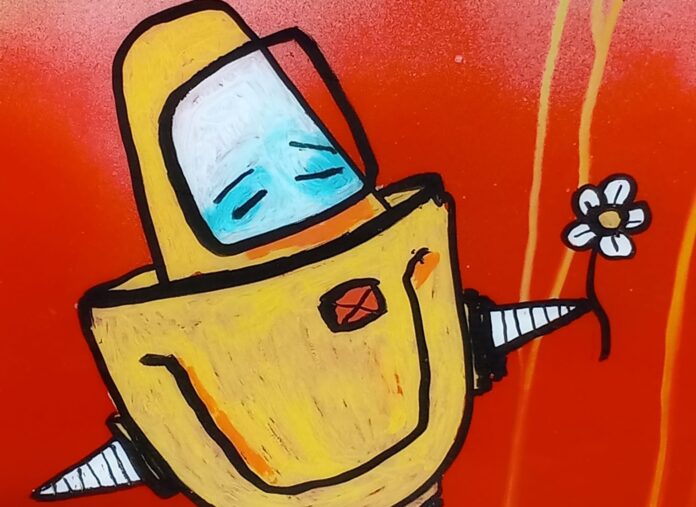Pete Doolittle, the Lower Haight artist who for decades filled San Francisco homes, sidewalks, galleries, and bodies with brightly colored street art renderings of robots, bees, skulls, and animal costumes—mostly painted on discarded windows, a hyper-local specialty medium—has passed away. His partner Claudia Nicolas Pierce announced his death in a public Facebook post, saying he “passed away peacefully, and very unexpectedly, Thursday, January 2, 2025 at 10:30am.” A GoFundMe has been set up for funeral and family expenses.
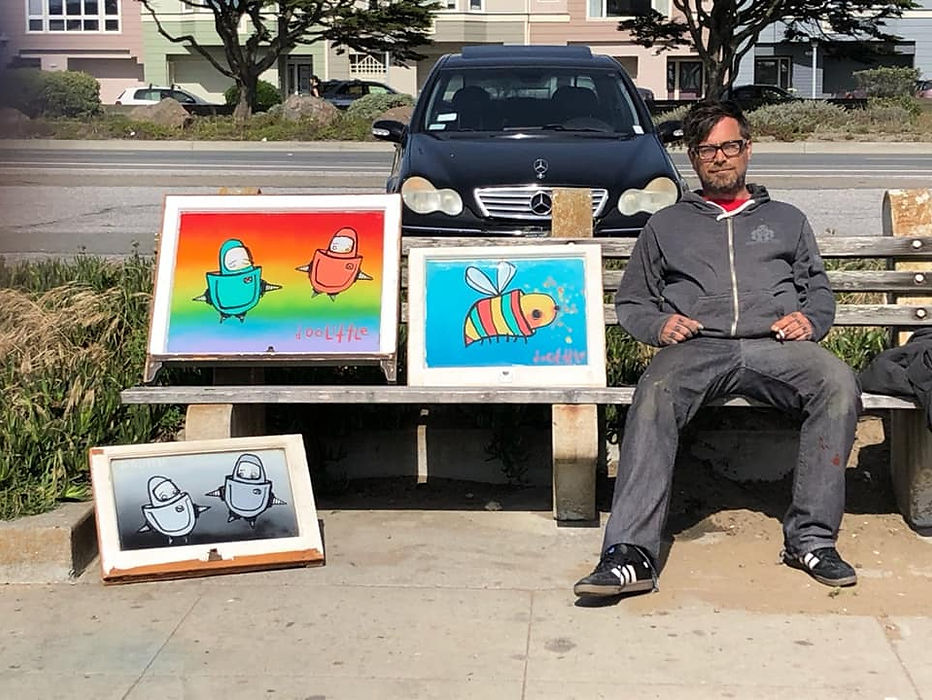
Pete, who was in his 40s, was a Lower Haight fixture, and along with artists like Romanowski, Jeremy Fish, and Jeremy Novy built an exuberantly idiosyncratic personal language of characters and symbols in the post-Mission School era of San Francisco street art, mostly based around the Haight neighborhoods. Pete’s own semiotics came to symbolize the Lower Haight/Divisadero area at the turn of the century, maintaining an artistic authenticity as “NoPa” rapidly gentrified.
Painting on abandoned large-pane windows scavenged from dumpsters and construction sites went from a whimsical repurposing of forsaken materials to a reverent reclamation of neighborhood history, as many Edwardian and Victorian buildings were gutted. (Pete worked with local window wizard Steve Wilson, who replaced the windows he sourced for him with period reproductions.)
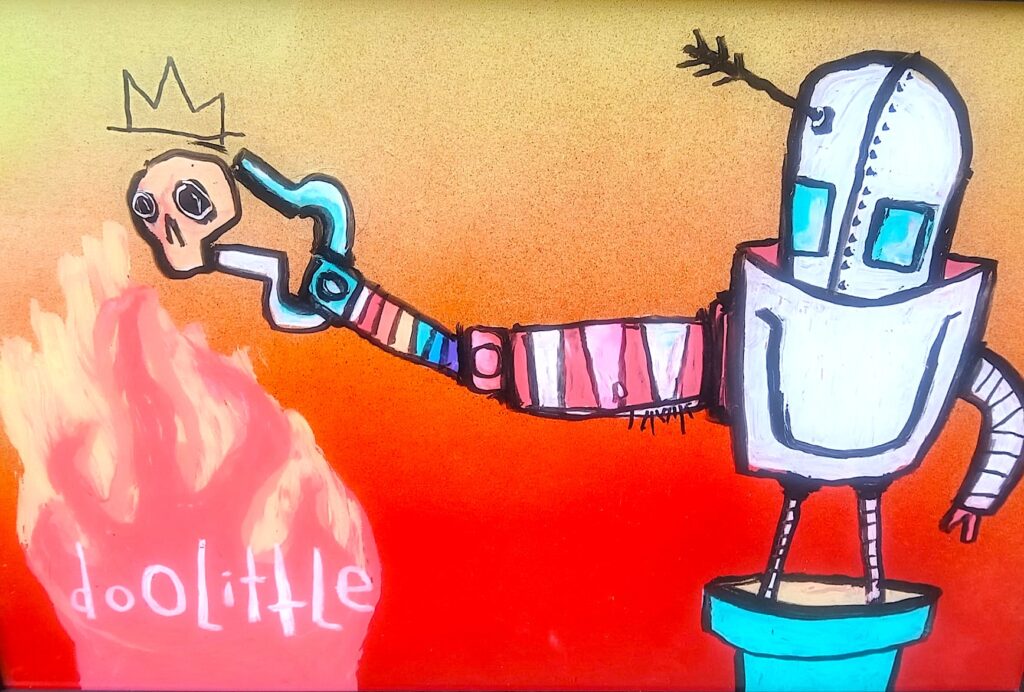
I don’t know anyone in my neighborhood who doesn’t have a Doolittle peeking out somewhere in their apartment (I have three that I adore), and Pete could always be found at spots like Noc Noc and Cafe International, or on Divisadero hawking his brilliant work. He was deeply involved in many scenes—one of his last posts memorialized Bretchen Towers, the young drag performer and club kid who died last month. An annual San Francisco tradition that has sprung up recently is Doolittle Day: People stop by Castro Tattoo on Groundhog Day, right around Pete’s birthday, and get a special Doolittle-designed flash tattoo by artist Jess Koala. Supercute.
As he told artist Pilar Clergue in a 2012 interview, Pete took inspiration from street art giant Keith Haring: “I grew up in the ’80s so I was a huge fan and I feel like this is evident in my art. I always loved his work because it conveyed such big and strong emotional message with only very simple line work.” Yet, he was on a very personal journey of his own through his art: “Usually I am slowly figuring out what I am wanting to say in my work as I go along. I stand back from my work, look at it over and over again, work on it gradually, and I discover that a part of me is in my work. It’s a kind of therapy for me, to know what’s going on in my mind. It’s a way of learning about myself.”
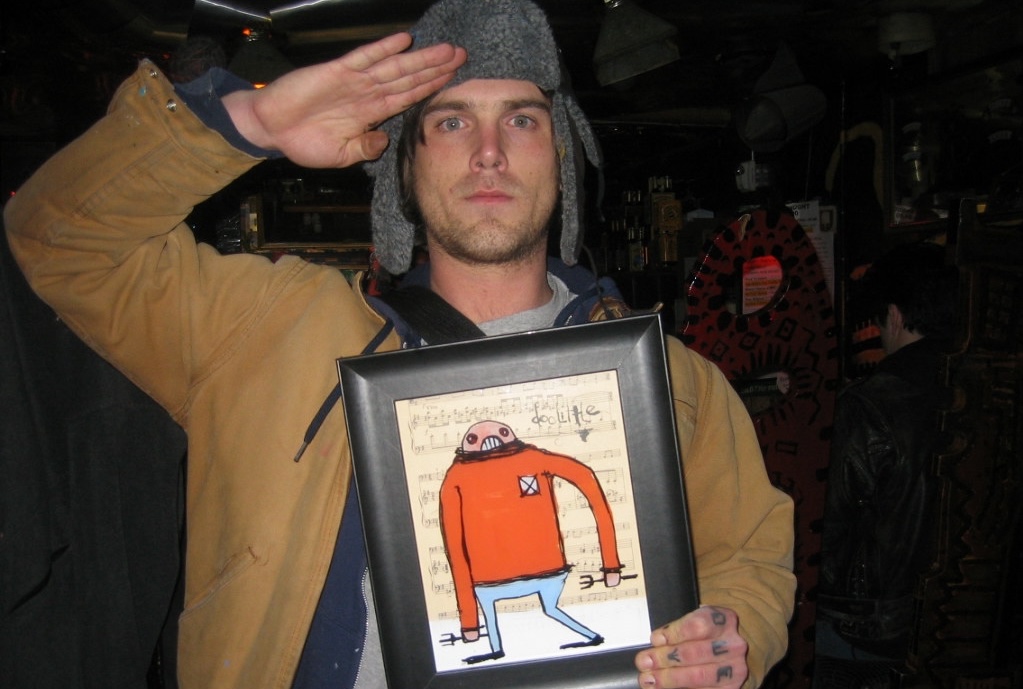
I participated (OK, hung out and day-drank) in many sidewalk sales on Divis that included Pete. He once traded me the work below—among the first to incorporate his little antennaed potato bug figure that would crop up more after his child was born—for a very gay, very large posterboard-mounted reprint of Andy Warhol’s Elizabeth Taylor portrait, which he ended up painting over. (I wish I knew where it was now!) He was the kind of hyper-smart, manic-brained person you could make nerdy jokes and just chill with.
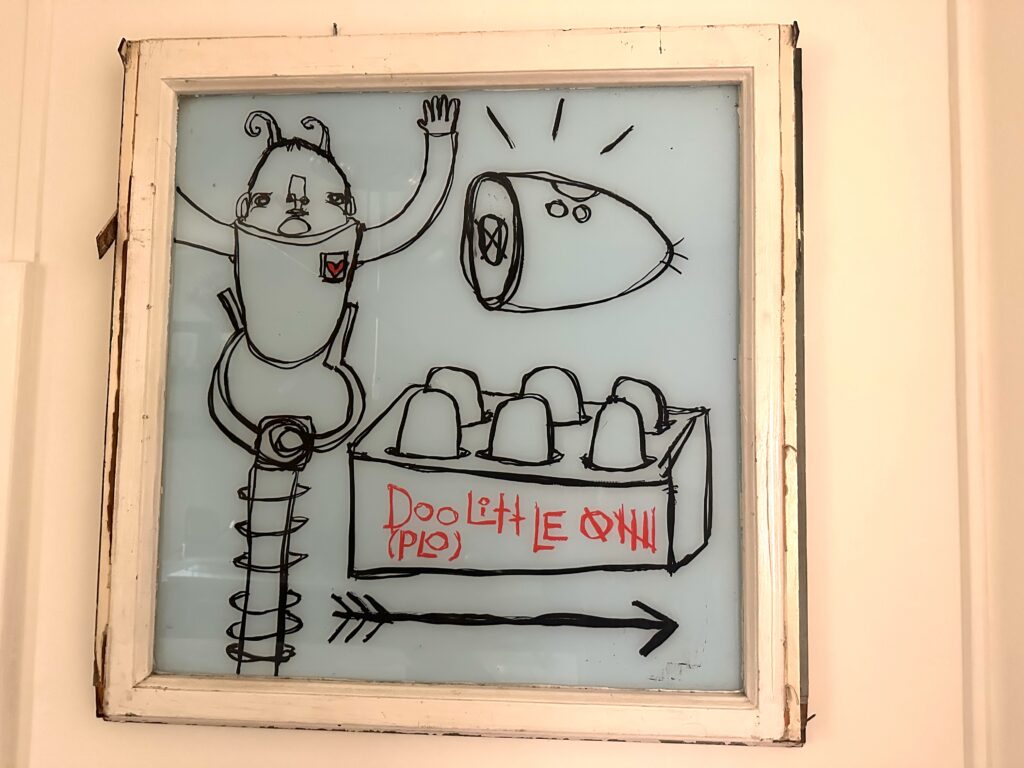
Claudia wrote, “Pete had a theory that the meaning to life was art, music, and love. That those three things were enough to heal you, and carry you in your journey. I’m grateful for this lesson, because I’ve found it to be true. And I hope, especially in these crazy times we’re living in, that all of you can remember this when things feel bleak. Put all your energy into art, music, and love, and you’ll get through.” The neighborhood (and I) will miss him greatly!


